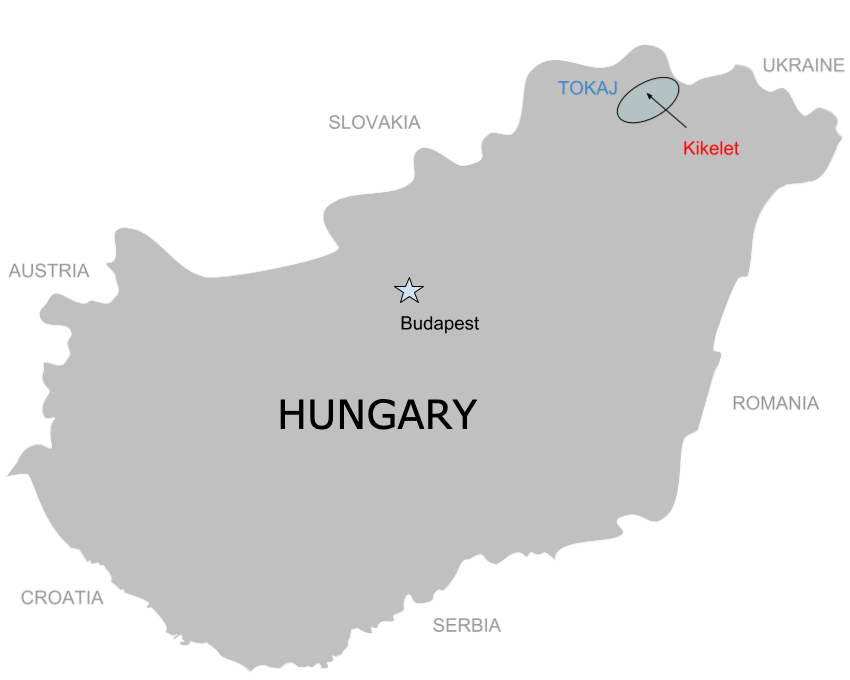2017 Kikelet Hárslevelű Lonyai
Tokaj, Hungary

Like her compatriot Samuel Tinon, Stéphanie Berecz is a French eonologist who initialy came to Hungary to work at the Disznoko estate, a property owned by the French insurance company AXA. In 2002, she and her husband Zsolt founded Kikelet Pince in Tarcal near the town of Tokaj, a village where Zsolt's family has been living for over two hundred years. Regarding the winery's name, the story is that Stéphanie didn't want a name containing any of the "funny" Hungarian letters like ű, ü, ö, ő. So they chose Kikelet, which means springtime in Hungarian. Year after year, they gradually acquired different lots around Tarcal (Lónyai, Vati, Farkas, Lestas, Kassai) and today, they farm 5 hectares of south/south-west facing vineyards planted half with Furmint, half with Hárslevelű.
VINEYARDS
The soil in Tarcal is volcanic covered with a layer of loess. While aszú wines from Tarcal's loess terroir get the right amount of moisture and are known to be particularly elegant, nobody before them had tried to make dry wines in Tarcal. But with limited yield and carefully selected grapes, Stéphanie and Zsolt have shown that they could produce dry Furmint and Hárslevelű that are elegant, balanced, and full-bodied.
WINE MAKING
The Berecz family house has a two centuries old cellar partially carved into the rock where the wines ferment and mature in oak casks. The winery produces around 11,000 bottles annually, including dry and semi-dry Furmint and Hárslevelű, some from single vineyards or , late harvest wines, Szamorodni, and hand-picked aszú wines. The grapes are whole cluster pressed. Fermentation occurs with native yeast without going through the secondary malolactic fermentation. The must is then racked and put into French and Hungarian oak barrels. Aging is on the lees. Most of the barrels are about 4 to 10 years old with a few new Hungarian for the Furmint. The Hárslevelű has no new oak to preserve the fruity flavors of the grape without being overwhelmed by oak. In 2014, Stéphanie has been awarded by her fellow winemakers the prestigious title of „winemaker of the winemakers”.
NOTES & PAIRINGS
In contrast to the Origo blend, Stéphanie never blends anything with Lónyai. This is a stand alone site. Tarcal is usually defined largely by loess soils, but it is of course more complicated than that. There is also chalk, dacite, and perlite that make vineyards like Lónyai susceptible to erosion but not as water retentive as clay. The acids here are sour and need aging, but once they balance out, it’s one of the most elegant and intense Hárslevelűs in the region. Built to age, ideally we drink this 3-5 years after vintage.
ANALYTICS & PRONUNCIATION
PRODUCER: Kikelet
APPELLATION: Tokaj (Tokeye)
VINTAGE: 2017
GRAPE COMPOSITION: 100% Hárslevelű (HARSH-lehveh-LOO)
CLIMATE: Continental (hot summers & cold winters)
SOILS: Volcanic covered with a layer of loess
ALCOHOL: 12.5%
RESIDUAL SUGAR: 4.8 g/l
ACIDITY: 7.4 g/l
